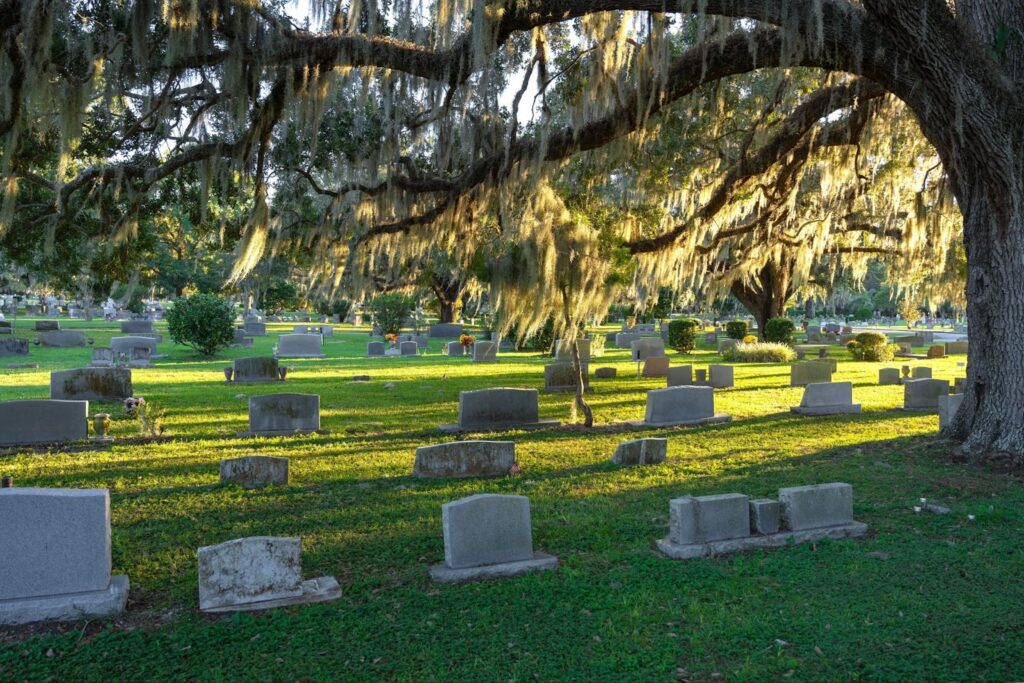Cemeteries may still rely on handwritten ledgers, weathered notebooks, or sketches that have passed through decades of caretakers. These records tell a story, but they often leave gaps. Graves may be misplaced, markers lost, or names duplicated. Modern cemetery mapping and information systems close those gaps by combining tools that record what’s visible on the surface and what’s hidden below it.
Cemetery mapping technology is driven by three main components: Ground Penetrating Radar (GPR), Geographic Information Systems (GIS), and Global Positioning Systems (GPS). Together, they create a complete digital picture; one that preserves the past and prevents future confusion.
Why Integrated Mapping Matters
Every cemetery holds thousands of individual records (e.g., burial names, plot measurements, markers, vegetation, and pathways). Managed separately, they leave gaps that grow with time. Integrated mapping closes those gaps.
A unified cemetery mapping technology system links surface coordinates, subsurface scans, and historical documentation within one digital map. Each layer reinforces the others, creating a record that matches the ground exactly as it exists. This kind of accuracy prevents misplaced burials, verifies ownership boundaries, and protects the data that defines a site’s history. Cemeteries built on verified information don’t rely on assumptions; they operate on evidence.
GPR Systems for Cemeteries
Ground Penetrating Radar (GPR) reads the ground like an archive. High-frequency radar pulses travel through the soil and reflect off buried objects and changes in density. The results show where the ground has been disturbed—revealing vaults, unmarked graves, and other subsurface features.
Because it doesn’t disturb the surface, GPR is especially valuable in historic or culturally sensitive areas. The method creates a non-invasive record of what’s below ground, allowing cemeteries to verify burials, confirm existing maps, and detect forgotten or undocumented sections.
In many cases, GPR is the starting point for a complete mapping project, meaning it helps provide the foundation that other tools build on.
The Function of GIS in Cemetery Mapping
Geographic Information Systems (GIS) turn raw survey data into a working map. Each grave, marker, and boundary becomes a spatial point linked to names, dates, and records. The result isn’t a static image but a dynamic digital layer that ties information to specific locations.
Modern GIS software, such as Esri’s ArcGIS, allows cemetery staff to visualize layouts, search by name or section, plan maintenance, or compare current data against older records. Some systems include images and notes for each plot, creating an archive that’s interactive and easy to update.
How to Map a Cemetery with GPS
Global Positioning Systems (GPS) provide the precision that ties the entire map together. Using survey-grade equipment, technicians record exact coordinates for headstones, walkways, trees, and boundaries.
When GPS data merges with GPR and GIS results, each burial site gains both position and context. The digital map aligns perfectly with the landscape, minimizing the risk of misplaced burials and simplifying future expansion or restoration. High-accuracy receivers and mapping software make it possible to document every physical feature of the cemetery as it truly exists, not just as it appears on paper.
Working in Sync: GPR, GIS, and GPS
Each of these tools works on a different layer of the same system.
- GPR reveals what’s underground.
- GPS marks what’s above it.
- GIS keeps the information connected and accessible.
Applications for Cemeteries
The combined use of GPR, GIS, and GPS helps with:
Locating Unmarked or Misplaced Graves
Some graves are easy to find; others aren’t. GPR can detect burials that were never recorded or whose markers have disappeared, giving cemeteries a way to confirm what’s underground without digging. That clarity prevents overlap and restores confidence in older sections.
Verifying Records
When GPR, GIS, and GPS data come together, they reveal where each plot actually lies. The results correct long-standing record errors and keep information accurate as the cemetery evolves.
Preserving Historical and Cultural Sites
In historic or culturally sensitive cemeteries, mapping protects what shouldn’t be disturbed. The digital record documents each section so that future maintenance or study can happen without harming the site.
Planning and Infrastructure
Mapping also serves as a planning tool. It shows open areas, changes in terrain, and where new sections can be added safely without disrupting existing graves.
Maintenance and Care
Once the map exists, it becomes part of everyday work. This is important because groundskeepers can record repairs, marker cleaning, and tree care directly within the system. Over time, that record shows how the site has been maintained and what areas may need attention next.
When to Schedule a Cemetery GPR Survey
Timing matters. Soil conditions affect radar clarity, and seasonal moisture can distort readings. The best approach is to schedule cemetery GPR surveys during dry weather, when the ground’s composition is most stable. Early scans, before landscaping or construction, prevent disruption and allow mapping to capture an undisturbed view of the site.
A planned schedule ensures that each layer of the mapping process, GPR, GPS, and GIS, builds from clean, consistent data.
Frequently Asked Questions
What is cemetery mapping, and why does it matter?
It’s the process of creating a detailed, digital map of every grave and landmark in a cemetery. The map keeps burial data accurate and prevents record loss.
Can this technology find unmarked or lost graves?
Yes. GPR identifies subsurface patterns that reveal burial locations without excavation.
How accurate is the mapping?
Survey-grade GPS reaches centimeter precision when paired with GIS integration.
Who benefits from professional mapping?
Caretakers, municipalities, families, and researchers benefit from professional cemetery mapping.
Is it safe to digitize cemetery records?
Yes. Modern mapping systems use encryption, off-site backups, and access controls to protect all digital data. Records will remain secure and accessible over time.
Modern Mapping with ViaVista
The combined use of GPR, GIS, and GPS turns cemetery mapping into a complete and verifiable system. Each method adds its own layer of information: GPR reveals what lies beneath the surface, GIS organizes and visualizes the data, and GPS defines every location with precision. Together, they create a lasting record that protects both accuracy and history.
ViaVista’s mapping projects and processes are handled by certified technicians who use GPR to locate unmarked graves, confirm existing burials, and identify underground features. GPS and GIS data are then integrated through Esri’s ArcGIS platform to create an interactive web-based map that can be searched by name, section, or landmark.
This process gives cemeteries a reliable and measurable record of their grounds. It supports maintenance, restoration, and long-term planning while preserving historical integrity.To start a mapping project, contact us for a free quote.

